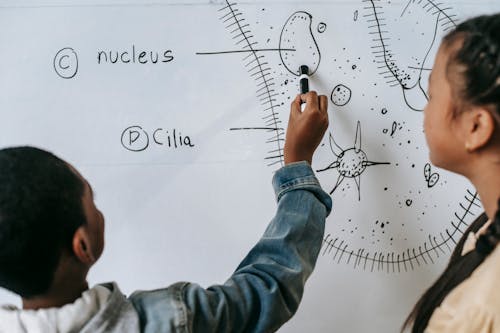🧓Arabic Level 3, Activity 12: “Describing/وصْف الأشْيَاء” (Face-to-Face/Online)

Photo via Pexels
Description:
In this activity, students will practice descriptive sentences. they will talk about how is something or someone looks like, they will be given an image and their mission will be to form a descriptive sentence according to the image.
Semantic Topics: big door, long hair, hot summer, superhero, hard work, interesting book, red hair, delicious food. باب كبير ، شعر طويل ، صيف حار ، بطل خارق ، عمل شاق ، كتاب ممتع ، شعر أحمر ، طعام لذيذ.
Grammatical Structures: descriptive sentence, جملة الصفة, Adjectives, Sentence Structure, Demonstrative Pronouns, اسماء الاشارة,
Products: Students will form descriptive sentences based on the images provided, and expand their vocabulary related to descriptive terms.
Practices: observing and analyzing images to create accurate and meaningful descriptions.
Perspectives: developing a deeper understanding of and appreciation for the Arabic language as they practice using descriptive sentences. and become more proficient in forming descriptive sentences, they will be better equipped to express themselves in Arabic
- Standard 1.1 :Students engage in conversations or correspondence in Arabic to provide and obtain information, express feelings and emotions, and exchange opinions.
- Standard 1.2: Students understand and interpret spoken and written Arabic on a variety of topics.
- Standard 2.1: Students demonstrate an understanding of the relationship between the practices and perspectives of the cultures of the Arab world.
- Standard 4.2: Students demonstrate an understanding of the concept of culture through comparisons between the cultures of the Arab world and their own
Idaho Content Standards for World Languages:
- COMM 1.1: Interact and negotiate meaning (spoken, signed, written conversation) to share information, reactions, feelings, and opinions
- COMM 2.1: Understand, interpret, and analyze what is heard, read, or viewed on a variety of topics.
- CLTR 1.1: Analyze the cultural practices/patterns of behavior accepted as the societal norm in the target culture.
- CLTR 1.2: Explain the relationship between cultural practices/behaviors and the perspectives that represent the target culture’s view of the world.
NCSSFL-ACTFL Can-Do Statements:
- I can talk about what ‘something/one’ looks like.
- I can describe a picture provided to me.
- I can translate a descriptive sentence into Arabic
Materials Needed:
Warm-Up
- Ask students to come up with 1 sentence describing the man in the image -Tariq-!
اطلب من الطلاب استنباط جملة واحدة تصف الرجل في الصورة -طارق-! - and then ask him to read the provided (descriptive sentences) and be more attentive to the sentence structure.
ثم اطلب منهم قراءة ما تم توفيره من (الجمل الوصفية) وأن يركزوا على بنية الجملة..
Main Activity
- Ask students to take turns coming up with “جُمْلَة الصّفة” describing the provided images!
اطلب من الطلاب أن يتناوبوا في إخراج “جُمْلَة الصّفة” التي تصف الصور المقدمة!
- Give them the first one as an example. encourage them by giving them multiple choices.
أعطهم الأول كمثال. شجعهم من خلال منحهم خيارات متعددة. - Repeat until the end of the activity.
كرر حتى نهاية النشاط.Wrap-Up
- ask students to choose the correct Arabic translation for the descriptive sentence, “I have a friend who lives in a small apartment”.
اطلب من الطلاب اختيار الترجمة العربية الصحيحة للجملة الوصفية “I have a friend who lives in a small apartment”.
End of Activity
- ask students to choose the correct Arabic translation for the descriptive sentence, “I have a friend who lives in a small apartment”.
- Read Can-Do statements once more and have students evaluate
their confidence.
(Use thumbs up/thumbs down or download our student cards.) - Encourage students to be honest in their self-evaluation.
- Pay attention, and try to use feedback for future activities!
NCSSFL-ACTFL Can-Do Statements:
- I can talk about what ‘something/one’ looks like.
- I can describe a picture provided to me.
- I can translate a descriptive sentence into Arabic.

